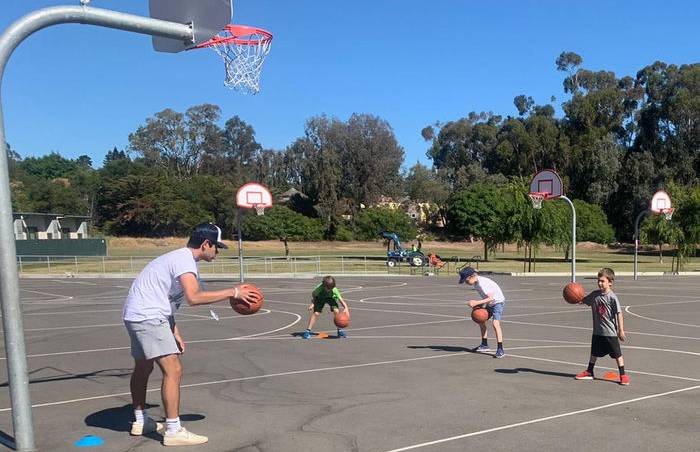Recreational community youth sport programs are typically open to all and welcome everyone regardless of one’s ability or prior experience. The “all play” philosophy of these recreation programs can often create significant challenges for volunteer coaches. In addition to being responsible for coaching young athletes of widely differing skills, knowledge, and experiences, these volunteers often have the task of coaching individuals with specific disabilities.
Neurodiversity is a way of describing the human brain and its differences compared to the ‘typical’ human brain. Known as neurotypical, humans have invented this concept to identify what is ‘normal’ in human society. Those that do not fit into this ‘norm’ are referred to as neurodiverse. It explains differences in the wiring of the brain and therefore its functioning which can be displayed as behaviours. Examples of neurodiverse conditions include: autism, ADHD, ADD, dyslexia and dyspraxia.
“if you’ve met one individual with autism, you’ve met one individual with autism.” (Steven Shore)
This means that no two neurodiverse athletes will have the same characteristics, strengths and weaknesses as the other. Every neurodiverse individual is unique, as coaches it is our job to figure out what works, what doesn’t and how to adapt our teaching styles to best accommodate them. It’s not their job to accommodate us…..they are physically unable to do so.
Coaching Tips
Move children and young people into physical activity right from the start of your session.
This will be more effective in building their engagement and concentration than starting a session with activities in which the child is expected to be still, for example, a long talk from the coach. When you understand the neurology of ADHD, then you will understand how vigorous movement and activity at the beginning will stimulate the transmission of neurochemicals in the brain which play a critical role in building engagement, focus and memory. Children with ADHD may move their bodies a lot. Motor hyper activity is a feature of ADHD. This can be an advantage whilst playing sport of course, but what about when you are coaching, or when you want participants to stand still and listen to you or watch others? The message is, let them fidget. It doesn’t mean they are not listening or are not interested. Children with ADHD move in order to focus and concentrate.
Keep Your Instructions Short
Really short. THIS.SHORT.
Asking kids with attention deficits to sit through long lectures, explanations or any instructions longer than a few chunks of information is actually not only unrealistic, it is almost cruel to them.
Give instructions in short, easy to remember chunks. Then send your player off to try it.
If you use “cue” or “key” words when you teach then you need to try to use the same 4-5 keywords for everything. I know, this is hard to do….especially if you are working on two very different skills in a lesson, but do your best. It is critical that you make your instructions as easily accessible for their brains as possible.
Help Them Prioritize
Often, athletes who seem to not give their best effort in a task are not procrastinating out of disinterest, they are unsure how to begin. Many neurodiverse athletes have deficits with executive functioning, which impedes how they access information to complete tasks.
In order to complete any task, we must be able to organize our thoughts enough to pick a beginning point. This involves prioritizing the elements of a task and picking the most important to complete first, organizing each subsequent element of a task in sequence, and finally, accomplishing the appropriate portion last.
This act of determining which elements of a skill must be practiced or completed first is sometimes the biggest obstacle to a neurodiverse athlete as they attempt to learn new skills and incorporate instructions.
Don’t rely on talk alone.
Children with ADHD can sometimes struggle with their working memory. If you have important instructions, requests or information that you would like the child to remember for your next coaching session, always back up verbal instructions with the visual. U
It is often said that children with ADHD “live in the moment” or have two time frames – “now” and “not now.” Therefore, delaying our praise, our rewards or the consequences for behaviours or actions can be less effective. Do it then and there and this will hold more meaning for the child or young person with ADHD than leaving this until the next session.
Focus on the Likes
A child or young person with ADHD will be much more successful when they are really interested and engaged in what they are doing. They can sometimes find it challenging to be involved in activities that don’t immediately interest them and can lose their attention very quickly. Find out the features of your sport or coaching sessions that the child or young person with ADHD really likes and enjoys and keep doing that. Adapt these features to include variety in your sessions. Variety helps to stimulate the attentional system. Some children may display abnormal responses to sensory stimuli. Some children are hyposensitive while others are hypersensitive. A hypersensitive child can respond negatively, sometimes aggressively, to being touched. A hyposensitive child, on the other hand, often struggles to make sense of the physical stimulation from the environment, may have poor body awareness, and appears clumsy. They may show a limited range of interests and/or a preoccupation with a narrow range of interests (dinosaurs, trains, bugs, etc.).
Out of ideas
If you are struggling with a child here are some non invasive questions you can ask their parents to help you out.
• How does your child communicate with you?
• What are your child’s interests?
• What upsets your child?
• What motivates your child?
• How do you know when your child is agitated or upset?
• How do you redirect your child when he/she is getting agitated?
• What is the best way to give your child direction?




Leave a Reply